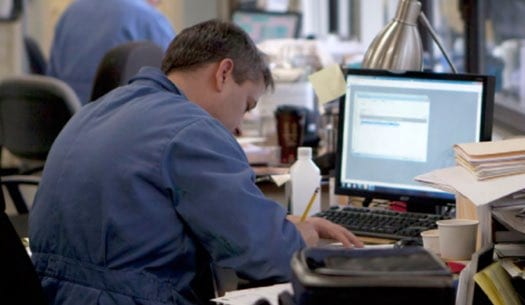
Some of the more common questions we receive regarding traffic paints are listed below. If you have a question that’s not answered below, please contact us by filling out an online form, calling us at 1-800-854-0782, or emailing us at questions@aexcelcop.com.
How should I prepare my surface before applying traffic paint?
Remember, proper surface preparation is the most critical factor in assuring a quality paint job. Your surface must be clean, dry, and free of contaminants that may interfere with the adhesion properties of your paint. Loose or chipped surfaces may require additional treatment, sometimes in the form of high-pressure air, before paint application to ensure long-term paint adhesion.
What type of traffic paint should I be using?
With all of the traffic paint products on the market, there's understandably confusion over which paint is best for your project. First, what are the VOC restrictions in your area? These may eliminate a majority of solvent based traffic paints. Next, what type of paved surface are you marking? Traffic paint for an airport runway requires different characteristics than parking lot paint. How long are you or your customer expecting the paint to last? This article outlines some considerations when choosing a traffic paint.
How do you recommend we stripe a newly paved surface?
It’s best to apply a thin first coat of waterborne paint as a primer. Let it cure with the surface for 30 days. Then, go back over it with the final product application after the asphalt has had time to set up.
What is the best paint for high traffic areas?
Our Roadzilla® methyl methacrylate paints are great for high traffic area markings. These two component paints are available in 1-to-1, 4-to-1, and 98-to-2 systems.
What are the traffic paint VOC limits in my area?
Consult this map for rules governing VOC limitations on the use of traffic paints in your state or county.
What's the best paint for striping concrete?
Concrete is considerably more difficult for paint to stick to than asphalt. We find our LowVOK acetone acrylic copolymer traffic paint adheres best to concrete. Our Toughline® low VOC solvent-borne traffic paint also provides exceptional performance over concrete.
Q: I sometimes see bubbling in solventborne traffic paint on especially hot days. What can I do to address this?
Bubbling can occur on hot days when the solvent evaporates especially quickly. The bubbles often settle back into the paint and the finish looks fine. To help combat bubbling in solvent based traffic paint, mix a pint of xylene or other slow solvent to your pail of paint. This will help slow down the solvent evaporation.
Can your waterborne traffic paints be applied with a roller?
This depends on the paint's drying mechanism, as some of our waterborne traffic paints dry too quickly for roller application.
- Regular Dry: Can be appiled with roller
- Fast Dry: Can be applied with roller with addition of water
- Jet Dry: Cannot be applied with roller
What is the difference between Type I, Type II, and Type III Spec Traffic Beads?
The spec references Federal Specification TT-B-1325D. Type I beads are standard drop-on beads. Type II beads are jetted directly into the traffic paint itself. Type III beads are larger and allow for superior retroreflectivity. Type III beads are often specified on airport runways.
What should I do with my empty drums and pails?
There’s a whole industry dedicated to putting steel 55-gallon drums back into use as drums for paints and other materials.
Steel pails from solvent-borne traffic paints should be emptied completely (you did pay for the material, after all) and scrapped after they are drip-dry cleaned. See if your local steel scrap yard will take them.
Plastic pails from waterborne traffic paints should be cleaned, rinsed and scrapped. A better option, however, is to reuse them in a variety of creative ways.
I have occasional issues with overspray through airless equipment. I notice a lot of overspray with some batches but none at all with others. Should we be using a different solvent to eliminate this?
No, Aexcel paints are designed not to require reduction upon application and to be sprayed directly from the can. If anything, thinning the paint may exaggerate the effect. Warmer paint can also exaggerate the effect, since solvent-based paints thin out as they get hotter. Think about how you store your paint. If possible, make sure it's in cool, dry conditions. Control the temperature during use, too, if possible.
Others have also reported instances of overspraying with newer airless equipment. To adjust for this, you'll need to take any one or more of the following actions:
- Lower your spray pressure
- Change to a smaller tip
- Change to a different style of tip
- Adjust the height of the gun


